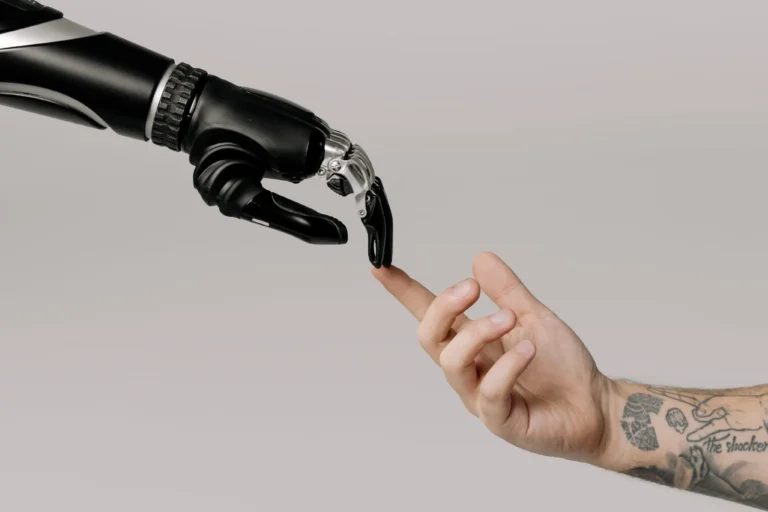Artificial Intelligence (AI) has achieved remarkable feats in recent years, from beating grandmasters at chess to changing the entertainment sector.
However, behind the hype lies major limitations in core areas like reasoning, common sense, coordination, and adaptability.
Here are 14 stubborn constraints facing even the most advanced AI systems today, explaining why Artificial General Intelligence rivaling humans remains a distant prospect.

1. Lack of Common Sense and World Knowledge
Unlike humans, AI systems lack the basic common sense, intuition, and background knowledge we accumulate through living in the messy, unstructured real world. This makes it hard for AI to function properly in dynamic environments.
For instance, simple facts like “you can’t drive a car that’s out of gas” are obvious to people but not AI. Teaching such an instinctive understanding of how the world works remains an open research problem.
2. Susceptibility to Bias and Unfairness
Real-world data often contains embedded human biases and stereotypes. This is reflected in AI system behavior, leading to unfair and unethical decisions that discriminate against minorities.
Detecting and correcting for bias poses an immense technological and social challenge around accountability and transparency.
3. Brittleness and Security Vulnerabilities
Many cutting-edge AI models are brittle, meaning tiny perturbations to their input can cause catastrophic failures. Researchers have repeatedly demonstrated attacks that fool advanced AI with barely perceptible changes to images, sounds, or text.
This poses risks ranging from misinformation to autonomous vehicle crashes. Building reliable, robust, and safe AI is crucial but technically daunting.
4. Voracious Energy Consumption
Power-hungry AI algorithms have spawned concerns about their environmental impact. For example, training the huge GPT-3 language model produced emissions equal to 125 roundtrip flights! Without efficiency gains, the relentlessly growing computing needs of AI systems could ultimately become unsustainable.
5. Lack of Transparency in Decision Making
Leading AI models are often inscrutable black boxes, and offer little visibility into their internal logic. But opacity prevents accountability and breaches public trust when AI makes influential decisions affecting human lives, for example in medicine, policing, or employment.
While research into explainable AI aims to lift the lid on these black boxes, truly demystifying their sprawling complexity remains challenging.
6. Difficulty in Flexible Coordination Between Multiple AI Systems
Narrow AI has achieved superhuman skill within specific domains. But coordinating multiple AI systems to solve open-ended, multifaceted real-world problems involving messy uncertainties and moving parts remains intractable.
While a human can juggle reasoning, perception, language, and common sense, combining complementary AI capabilities into flexible general intelligence has proven enormously difficult in practice.
7. Inability to Genuinely Understand Concepts or Situations
Beyond processing statistical patterns, advanced cognition requires contextual comprehension, causal inferencing, and fluid reasoning.
But despite advances in areas like computer vision and language processing, AI still does not truly understand what it sees, reads, or hears in the rich, meaning-laden sense that humans do. Rather it infers correlations without deeper embodiment of concepts, intentions, and implications, hindering its real-world social applicability.
8. Lack of Common Sense Reasoning Capabilities
To operate properly in human environments, AI needs the instinctive reasoning abilities that people acquire from living in the physical and social world. For instance, no AI today could pass an elementary school student’s science or social studies test, demonstrating little concrete reasoning about materials, forces, society, and ethics.
Rather than concept-driven reasoning, AI relies on statistical pattern recognition within fixed contexts, making flexible, commonsense intelligence difficult.
9. Immense Difficulty Adapting to Changing Conditions
The statistical assumptions underlying many AI algorithms work well for stationary datasets but falter when deployed in dynamic real-world situations with shifting conditions, contexts, and distributions.
This makes it tremendously difficult for AI systems to exhibit the flexible, adaptive learning capabilities that humans intuitively demonstrate. Even minor changes to the environment necessitate full model retraining. Achieving flexible learning remains an open grand challenge.
10. Lack of Social Perceptiveness and Emotional Intelligence
Understanding subtle social and emotional cues comes effortlessly to people but remains impossible for AI. Nuanced human attributes like humor, irony, culture, empathy, friendship, deception, social faux pas, and taboos fall completely outside AI’s grasp.
Yet these very attributes permeate nearly all human group interactions and activities. Mastering such social intelligence is crucial for AI systems meant to integrate smoothly into human collaboration contexts.
11. Creativity and Innovation Remains Elusive
While AI can generate painting-like images, song-like sounds, and text-like words, it lacks human-like intentionality and creative abstraction. There is no semantic understanding or creative spark behind AI’s outputs – just clever correlation mining from training data.
How to achieve genuine visionary creativity and not just superficial stylistic mimicking remains a mystery. Can the fundamentally statistical pattern recognition approach underpinning AI ever lead to human-level novelty, imagination, and discovery? It’s unclear if current techniques have the capacity.
12. Susceptibility to Adversarial Attacks and Manipulation
The statistical assumptions behind many AI algorithms make them intrinsically vulnerable to deliberately malicious inputs crafted to deceive them. Researchers have demonstrated attacks that fool AI with small adversarial changes imperceptible to humans.
For example, various deep nude AI apps can manipulate the human body and bring serious ethical concerns.
This raises concerns about AI security and safety. Building systems robust to such adversarial assaults remains challenging, especially as attacks grow more sophisticated over time.
13. Reliance on Huge Training Datasets
The performance of AI systems is limited by the quantity and quality of data they’re trained on. Annotating massive datasets to fuel algorithm improvement sucks up eyeballs, money and time.
This data hunger has spawned crowdsourcing giants like Amazon Mechanical Turk and Appen. But even as datasets scale, their biases and limitations constrain AI progress. Plus, many crucial real-world areas suffer from scarce data.
14. Narrow Focus Means Poor Transfer of Learning
Despite the hype about “Artificial General Intelligence”, all advanced AI today is narrow AI, restricted to specific problem domains and datasets. While transfer learning helps, AI still cannot smoothly transfer learning between widely different tasks. Self-driving cars don’t help chatbots converse or translate languages. Each application requires customized, expensive training. Achieving versatile, widely transferable learning remains an open challenge.
Conclusion
In summary, today’s AI has achieved transformative capabilities but still falls far short of human intelligence. Mastering flexibility, common sense, and deep understanding remain elusive.
Rather than standalone systems, AI will continue assisting humans across domains. However, achieving more broadly capable Artificial General Intelligence remains a longer-term goal for the decades ahead due to the intrinsic constraints above.




